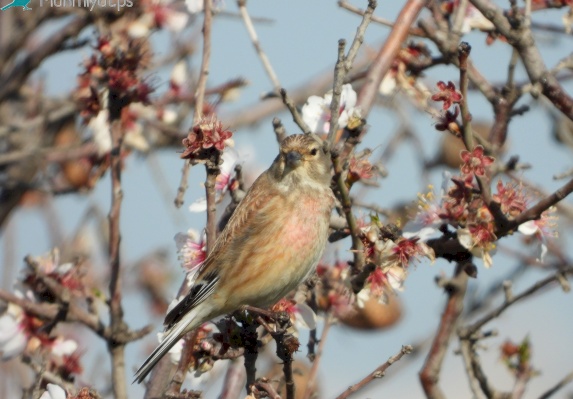Linnet
© All rights reserved by www.mahmiyat.ps
|
The Linnet is in the Fringillidae family in the Passerine order. The Linnet is quite small and slim figured. Its size is around 13.5 cm , the wingspan is 22-26 cm and it weighs 13-20 gram. The origin of its Arabic name is in the red color on forehead and breasts of the males which resembles the color of an apple. The head of the Linnet is grey and its back and wing coverts are dark brown. The edges of the secondaries and the tail feathers are white which is very obvious during flight. The females and juveniles are lacking the red forehead and breast of the males. And the juveniles are also having stripes that disappears in the adults. The meaning of the Latin name - Carduelis cannabina is the "cannabis finch" due to it special taste in the tasty cannabis seeds. The Linnets also favor the Flax seeds - Linum usitatissimum of which Linen is made, and there for it got its English name – Linnet. In winter the Linnets group up in large numbers and forage for food in mixed flocks with other seed-eaters such as Greenfinches, Spanish Sparrows and Goldfinches. It breeds on short trees and bushes in mountainous terrains and it can also be found in populated areas. During winter the Linnet goes down to the valleys and slopes, there it can be found mainly in open fields. The Linnet is common throughout Europe, the Caucasus and the northern Middle East, and it has 7 different subspecies. Conservation status – least concern. The threats the Linnet faces are mainly trapping by poachers to be sold as caged song bird and loss of habitat. Migratory behaviour: Resident breeder. Remarks : declyning
|

